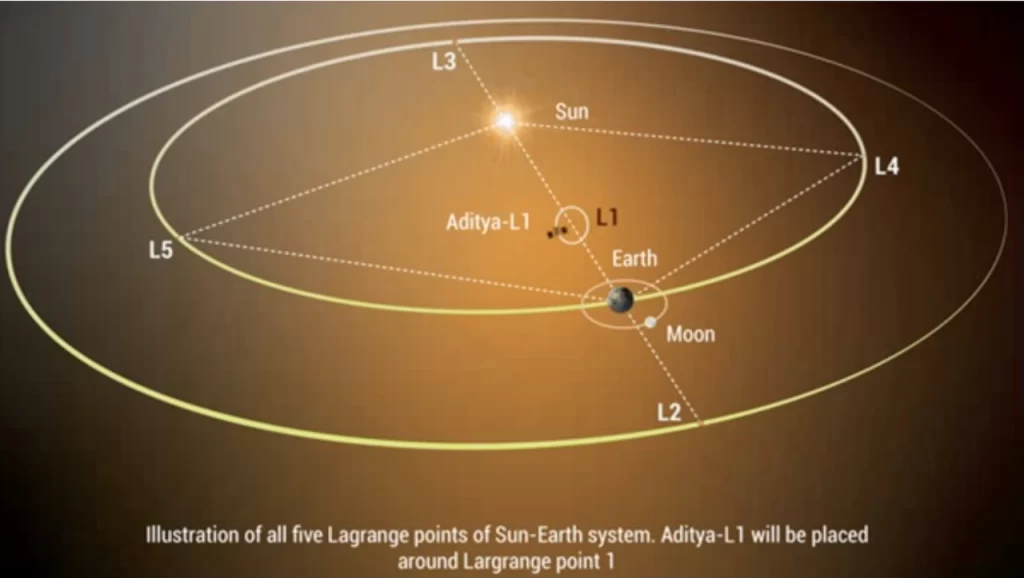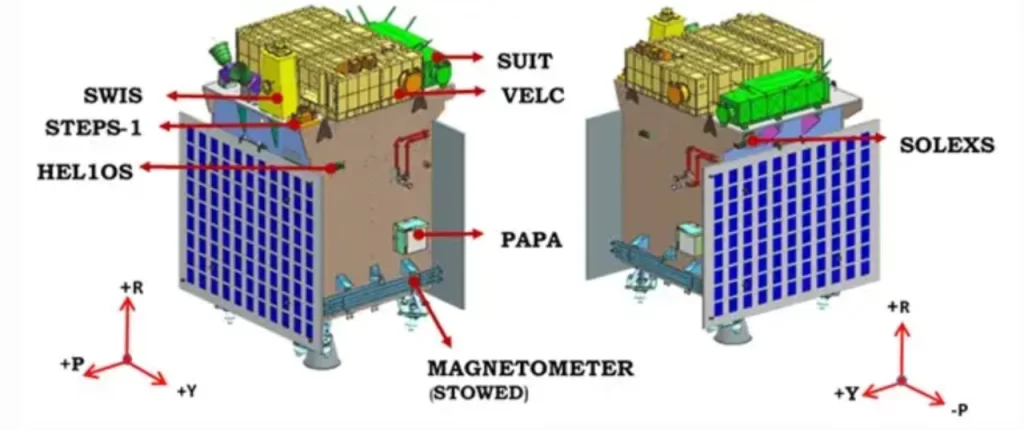India’s inaugural space mission to study the Sun, known as the Aditya-L1 spacecraft, is nearing completion. According to S. Somnath, the head of the ISRO space agency, the craft is expected to reach its designated observation point, Lagrange Point L1, by January 7.
The Aditya-L1 solar research station, India’s first autonomous solar research station, was launched into Earth’s orbit on September 2. Following roughly three weeks, it was aimed at Lagrange point L1, which is approximately 1.5 million kilometres away from Earth and towards the Sun. It is anticipated that the trip will carry on for 125 days. The station has already begun collecting scientific data on solar flares in high-energy X-rays to analyse the data.
At the Lagrange point, the station can stay stationary concerning the Earth and the Sun without much fuel. This will enable it to observe the Sun without movement and record solar radiation.

Aditya L1 encompasses seven instruments or payloads designed to explore various unanswered aspects of our dynamic and unpredictable star. Among these instruments, four are specifically designed to observe the Sun directly, while the remaining three are dedicated to conducting in-situ measurements to examine the characteristics of space weather generated by the Sun in interplanetary space.
Different laboratories nationwide create the seven instruments or payloads of Aditya L1. The VELC instrument is developed at the Indian Institute of Astrophysics in Bangalore, the SUIT instrument at the Inter University Centre for Astronomy and Astrophysics located in Pune, the ASPEX instrument at the Physical Research Laboratory in Ahmedabad, the PAPA payload at the Space Physics Laboratory in Vikram Sarabhai Space Centre, Thiruvananthapuram, and the SoLEXS and HEL1OS payloads at the U R Rao Satellite Centre in Bangalore. The Magnetometer payload is also created at the Laboratory for Electro Optics Systems in Bangalore. These payloads have been developed through extensive collaboration between various centres of the Indian Space Research Organisation (ISRO).
ISRO revealed on November 7 that the High Energy L1 Orbiting X-ray Spectrometer (HEL1OS) on board the Aditya-L1 spacecraft observed the impulsive phase of a solar flare. This phase signifies releasing a significant amount of energy during a solar flare.
Less than two months after the launch of Aditya-L1, India’s first ever solar probe, a solar flare occurred on October 29. This event occurred shortly after the spacecraft was launched using a PSLV (Polar Satellite Launch Vehicle) from Satish Dhawan Space Centre.
After it was commissioned, scientists activated the HEL1OS instrument on October 27 to begin its testing phase.
The purpose of this study is to investigate the intricate interactions that take place between energy and particles during solar flares. The findings of this study will shed light on how these enormous eruptions on the surface of the Sun might influence space weather and the technological systems located on Earth. This new information illuminates the dynamic relationship between our Sun and the surrounding space environment.
In two days following its activation, HEL1OS detected an outburst of X-ray activity between 8 a.m. and 6 p.m. EDT (1200 and 2200 GMT), demonstrating the characteristic sign of a solar flare.

Supporting the findings of HEL1OS, the Geostationary Operational Environmental Satellite-18 (GOES-18) from the U.S. National Oceanic and Atmospheric Administration also detected an increase in X-ray emissions simultaneously.
The European Space Agency (ESA) supports the Aditya-L1 mission in two significant ways. Firstly, ESA supplies deep space communication services, crucial for successfully transmitting data between the mission and Earth. Secondly, the previous year, ESA assisted ISRO by validating essential new flight dynamics software, which plays a crucial role in the accurate navigation and control of the spacecraft.
“Deep Space” refers to regions of space that orbit the Earth at a great distance. These areas can encompass the huge distances between moons, planets, and other celestial bodies in our solar system, as well as regions beyond our solar system. Navigation and communication in deep space provide unique obstacles due to the extensive distances involved.
Communicating effectively is an essential component of every space mission. Ground station support is required to receive scientific data from a spacecraft, monitor its condition, ensure its safety, and determine its precise location. This support makes retrieving valuable scientific information, assessing the spacecraft’s well-being, and tracking its whereabouts possible.
In addition to adhering to internationally acknowledged technological requirements, the European Space Agency (ESA) has built a global network of deep space tracking stations. This makes it possible for the European Space Agency (ESA) to assist its partners in tracking their spacecraft, sending commands, and receiving data from them, regardless of where they are located within the Solar System.
